Bunny Inc., which runs an online marketplace for voice-over actors, has more than 50 employees scattered between its offices in San Francisco and Bogota, Colombia, and remote work sites around the world.
That can make it hard to ensure employees are satisfied with how things are going at the company, says cofounder and chief people officer Tania Zapata.
"Working remotely with people can potentially create a lot of issues in terms of cohesion and things like that," she says.
So for quick daily happiness check-ins, the company uses an app called Niko Niko that lets employees quickly swipe across their smartphone screens to indicate their overall moods, or to answer more specific survey questions. A touch-and-drag happiness meter and corresponding smiley (or frowny) face let Bunny employees say how they're feeling about everything from their relationship with their managers to the cleanliness of the corporate offices.
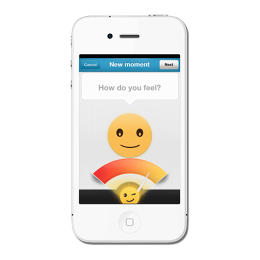
"You can actually act upon things that are not going very well sort of faster than you would if you just wait for the person to say something," says Zapata.
For Bunny, one source of virtual frowns was the Internet speed in the Bogota office, she says.
"Internet was not as reliable as here [in San Francisco], but it has improved," she says. "We probably haven't gotten [a frown] in a while."
Companies collectively spend about $720 million a year trying to measure and boost employee engagement, according to a 2012 report by human resources consultancy Bersin & Associates, since acquired by Deloitte, and for good reason: Studies have long found that better engaged workforces boost productivity and profit, employee retention, and even worker safety.
Research has also shown workers with higher job satisfaction are, by many measures, healthier, and warned that excess work stress can take its toll on the well-being of workers' families.
Still, despite the high level of corporate spending on engagement, survey results released in January by polling giant Gallup estimated that less than one-third of U.S. workers were engaged in their jobs—meaning "involved in, enthusiastic about, and committed to their work and workplace"—in 2014.
Startups hope to change that by applying some of the same data-oriented techniques publishers and advertisers have used in recent years to boost engagement with online content, like notifications, apps, and emojis.
Employee-engagement surveys have long been a staple at many offices, but new survey and data-analysis technology like Niko Niko, an app developed by a New Orleans startup of the same name that first launched about two years ago, has recently made it possible for employers to attempt to track employee sentiment in essentially real time. If they can do that, managers could be better poised to boost that sentiment too.
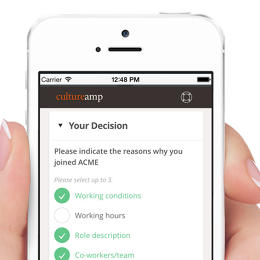
"If you think of the last 10 or 20 years of marketing, and how we use data from our customers to improve our companies, there's been a torrent of innovation," says Didier Elzinga, cofounder and CEO of Melbourne engagement polling startup Culture Amp. "We thought, why did the marketers get to have all the fun?"
Culture Amp lets companies administer questionnaires from new-hire and exit surveys to periodic engagement surveys and one-question polls, all through a flexible web and mobile interface.
"One of the key things is making the user experience better, so it's something you can do on an iPad, you can do on an iPhone, you can do on the web," Elzinga says.
And the tool automatically provides interactive visualizations of results to managers based on company-specific privacy settings, often in real time.
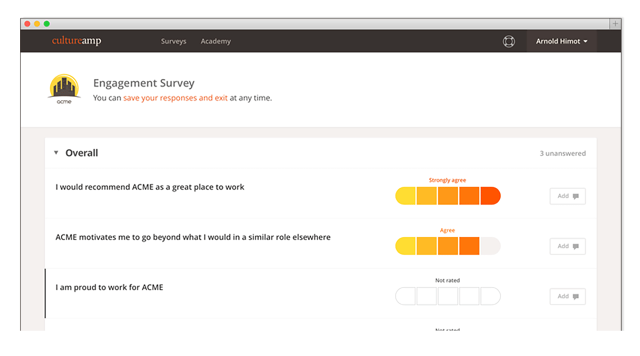
Kiss Of Death
It wasn't that long ago that engagement surveys typically took months to put together, distribute, and analyze, says Ken Oehler, global employee engagement practice leader at consultancy Aon Hewitt. Now, he says, firms can ask their workers how they're feeling and respond essentially instantaneously.
"It's all about speed and transparency," he says. "It becomes so instant that the employee knows they have a voice."
Aon Hewitt offers its own quick survey smartphone app called Mood Ring to get quick input from employees on a monthly, weekly, or daily basis. Because smartphone surveys are still new, it's hard to know the ideal polling interval for every situation, Oehler says, but he and others in the field say one aspect that's beyond debate is the importance of quickly responding to employee concerns as soon as they surface.
"Regardless of frequency, this kiss of death is to ask questions and do nothing about it," says Oehler.
The biggest boosts in employee engagement and satisfaction come from focused efforts by managers, not simply from new survey technology, he says.
"I think technology is simply an enabler," he says. "I think if you had all this technology and you didn't have the focus of executive leadership, it wouldn't really work."
To help get managers and employees on the same page, one Boulder, Colorado, company called RoundPegg looks to quantify the often imprecise notion of corporate culture and how individual employees' personalities fit into a company or team's own culture.
"The heart of the matter, according to RoundPegg, is that there's these 36 values that define how we show up in the workplace," says David Lyon, RoundPegg's chief revenue officer.
Understanding those values—things like willingness to take risks, creativity, and informality—and where employees stand relative to the organization as a whole, can help managers figure out what keeps workers happy and what kinds of rewards they respond best to, like boosts in pay or opportunities for professional growth, he says.
Companies can also use RoundPegg's surveys with potential hires, but the purpose isn't necessarily just to weed out employees who aren't a good "culture fit," Lyon says. The tool doesn't make any hiring recommendations, but aims to guide interviewers in understanding differences between employees and current staff, and help them formulate questions to understand how prospective employees might fit in.
For example, Lyon says, if the prevailing corporate culture is rules-oriented, and a potential hire scores high for informality, the tool might suggest the hiring manager discuss that difference in the interview, and ask the candidate for examples of times where he or she successfully dealt with similar differences at previous jobs.
"Having that common [language] to talk about what drives us in the workplace is part of the beauty in what RoundPegg brings to the table," says Lyon.

Important Questions
While survey and visualization tools have changed dramatically, the questions employers are looking to have answered about how to keep their workers happy and productive seem almost timeless. Indeed, one of the most well-known employee-engagement surveys, Gallup's Q12, has purposely featured the same questions in the same order for close to 20 years, whether it's administered on the web, on paper, or through a phone system.
"We've had a chance to study those same elements—the Q12—across very different environments," says Jim Harter, chief scientist for workplace management and well-being at the 80-year-old consulting and polling company.
The survey asks employees to what extent they agree with 12 proprietary statements about their work environment and relationships with coworkers and management: whether they have a "best friend at work," for example, and whether their "opinions seem to count." It's been administered to about 29 million people over the years and extensively studied by Gallup's scientists, he says.
And despite economic, cultural, and technical changes, Gallup reports the survey questions have continued to be good predictors of employee performance: A 2012 Gallup study found companies and teams that did better on the survey continued to have lower turnover, better safety and product quality records, better customer-service ratings, and even higher earnings per share.
"Knowing what's expected of you at work is still important," Harter says. "Having an opportunity to do what you do best is still important."
Gallup generally recommends employers take a company-wide engagement "census" twice a year, giving workers time to respond and managers time to digest and respond to employee concerns, with the possibility of periodic "pulse" surveys in between to track any changes in sentiment.
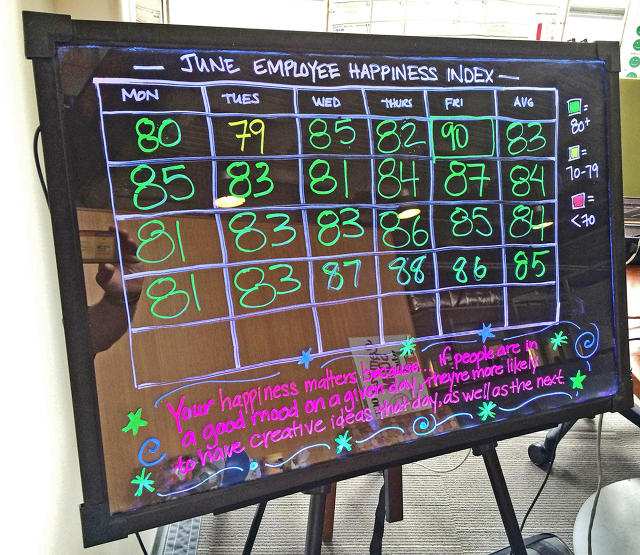
That's essentially the approach taken by the United Way for Southeastern Michigan, a Detroit-area charity that decided to take a serious look at boosting employee engagement about a year ago, after employees took the Q12 and managers felt "scores weren't awesome," says Ursula Adams, the nonprofit's director of employee engagement.
Since then, the organization worked to change that by training managers on engagement-boosting techniques: giving workers roles suited to their talents, and making sure to recognize their accomplishments, for example. And, it's used Niko Niko to track how employees are feeling on a day-to-day basis, even posting average percent scores on a physical board at its headquarters, Adams says.
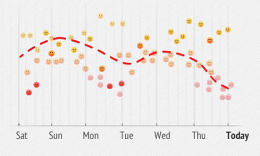
"Now it's very unusual for us to go below 80," she says. "What used to be completely acceptable—mid-70s—now people are trying to diagnose what's going on, when it used to just be normal."
Kristen Holt, the organization's chief operating officer, says she's used the Niko Niko app's comment field to help herself keep track of what kinds of experiences at work generally brought her positive energy.
"If the email [with the Niko Niko survey invitation] would come through after maybe I had a frustrating internal meeting, that would be something that wouldn't bring me energy," she says. "If I had the opportunity to collaborate with somebody on the team and really accomplish something, that's when I would have a lot of energy."
Holt has mostly stopped taking the daily Niko Niko surveys herself, however, since the survey results are reviewed by lower-level employees within the charity. She doesn't want her noting when she's "having a bad moment" to negatively impact other people's engagement, she says. That's not as much of a concern with the Q12, since it's based on longer-term trends instead of day-to-day experiences, says Holt.
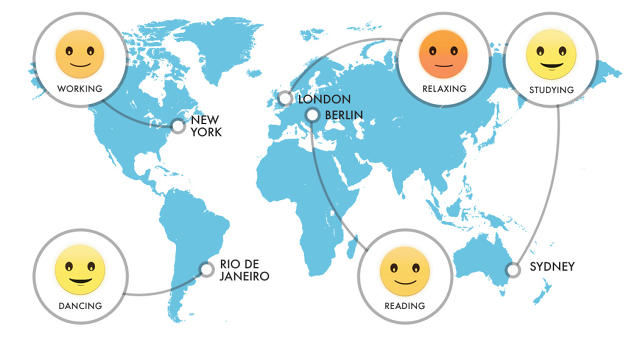
"I think the organization has really valued the transparency around the Q12 results, as well," she says, and notes that members of the leadership team share their results with the organization at large.
The nonprofit doesn't intend to entirely replace the Q12 with Niko Niko, since it still appreciates Gallup's years of research and the ability to see how the organization stacks up against comparable employers in the polling giant's databases, Adams says.
"We're taking the Q12 again in August of this year, and I think it will be fascinating to see where this goes," she says.